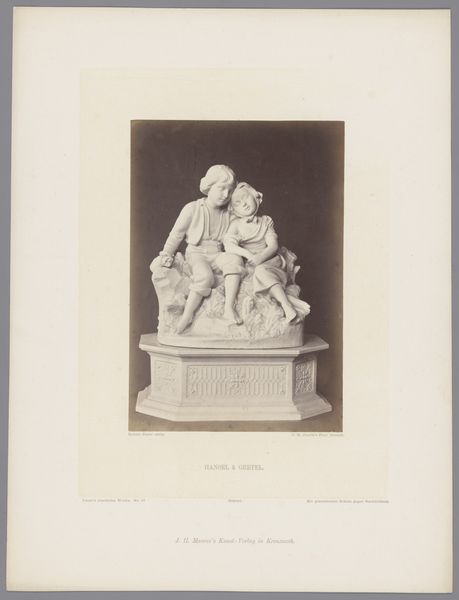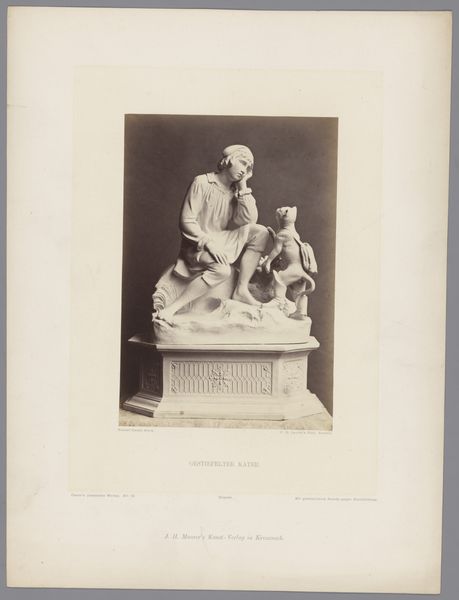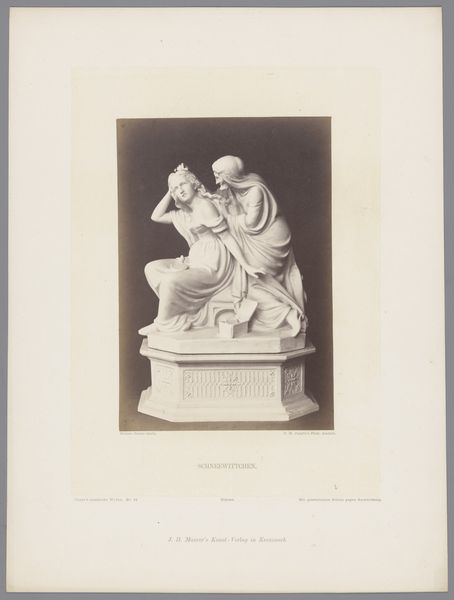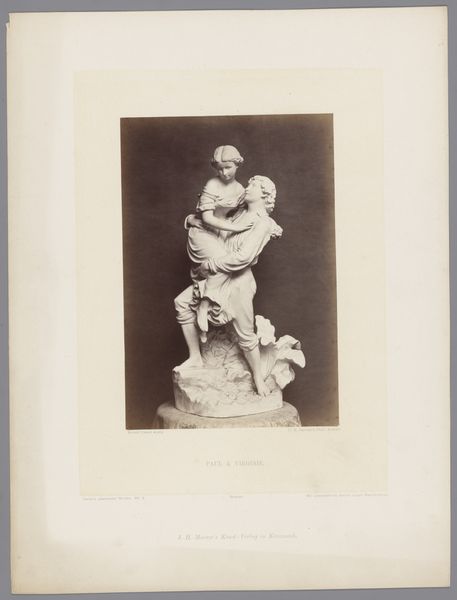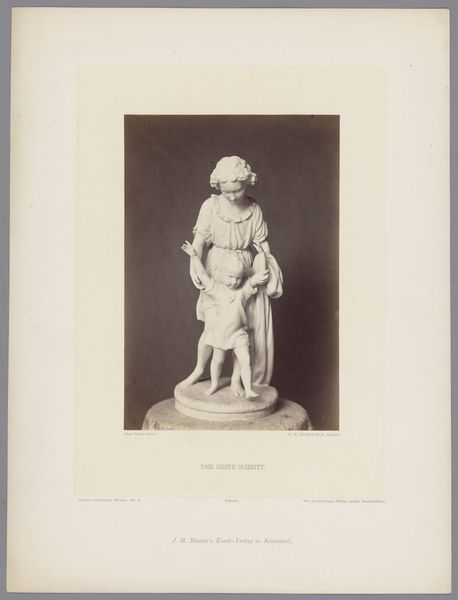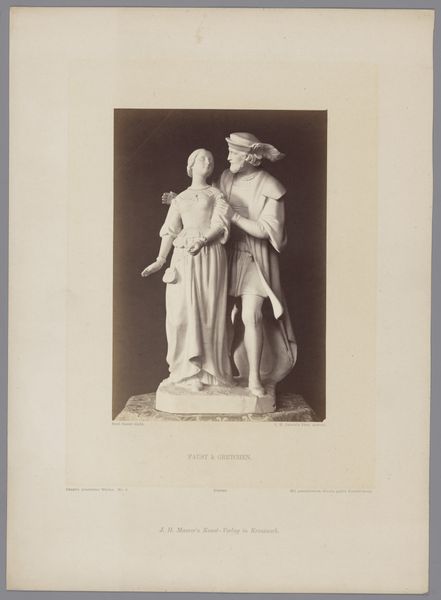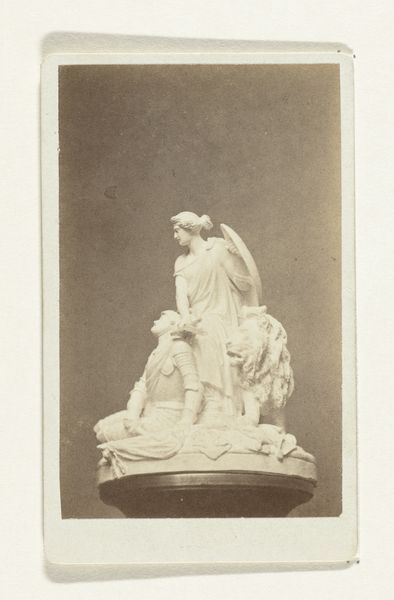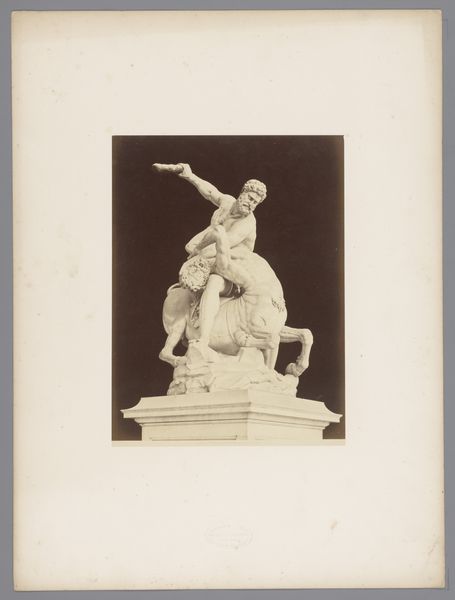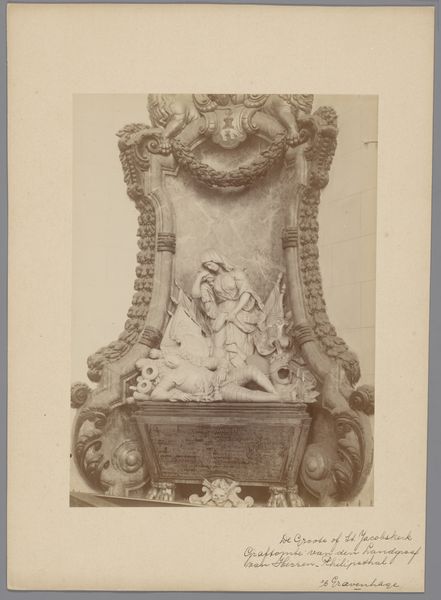
Dimensions: height 348 mm, width 257 mm
Copyright: Rijks Museum: Open Domain
Curator: Looking at Robert Cauer's "Roodkapje," likely created between 1850 and 1900, I find myself drawn to its stillness. The sculpture almost whispers secrets, don't you think? Editor: Immediately, I see a tableau steeped in allegory, the pure, almost porcelain, texture speaking of Romantic ideals—a dance between vulnerability and contained danger, all in carefully rendered form. Curator: Indeed! It’s such a tactile piece. Knowing it is a sculptural rendition of Little Red Riding Hood offers a layer of darkness and innocence, a fairy tale frozen in time. There is the innocent girl seated, apparently unharmed, close to what appears to be the wolf. I wonder, is she about to offer him flowers, as is implied in the scene? Editor: Semiotically rich, isn’t it? The seated pose could suggest a false sense of security or dominance; the wolf, though physically present, is tamed, a detail intensified by its textural alignment with the base. This juxtaposition highlights Romanticism's exploration of darker emotional depths with polished refinement. The smooth texture of the piece denies the narrative’s original darkness. Curator: And her expression… so serene, despite being, metaphorically speaking, in the belly of the beast. It’s fascinating how Cauer uses figuration and texture to amplify the fairy tale’s undercurrents, not just telling the story but immersing us in its dreamlike quality. I wonder what it's made from; do we know the medium used? Editor: Regrettably, this image accompanying the information does not provide specific material data. However, judging from the smooth finish and monochromatic tone in the image, my conjecture would be towards materials such as plaster or possibly a delicate form of porcelain—echoing those prevalent classical sculpture aesthetics while adding layers of symbolic resonance, capturing an era's yearning for stories that touch upon universal human fears and aspirations. It appears the use of soft light further softens the ominous undertones. Curator: I agree completely; Cauer definitely transports us to the uncanny core of childhood imagination, where safety and peril often intertwine with one another. In a piece like this, the artist seems to beckon us into a delicate, profound narrative. Editor: An elegant testament to art's capability to translate folklore into potent artistic statements— a perfect snapshot of 19th-century Romanticism’s obsession with rendering the familiar foreign.
Comments
No comments
Be the first to comment and join the conversation on the ultimate creative platform.
